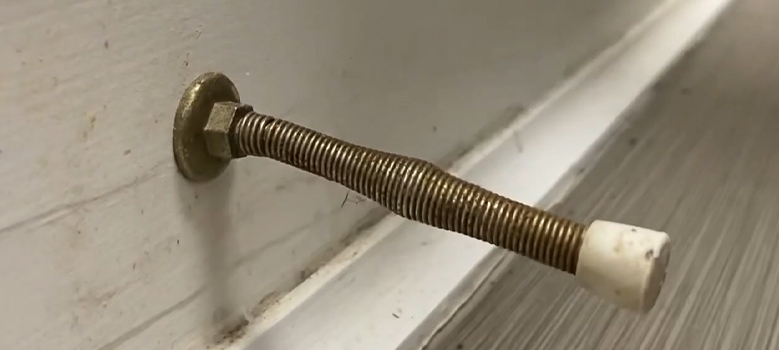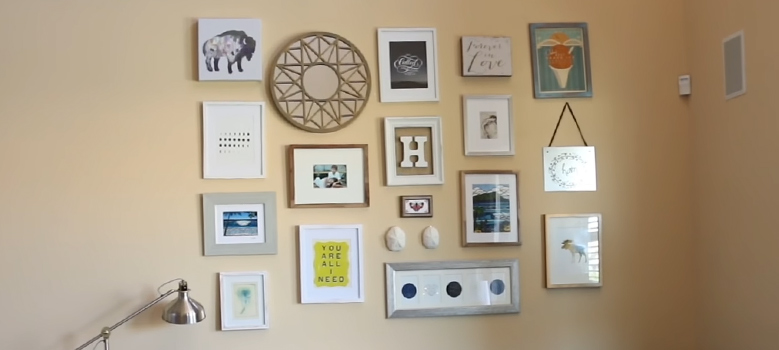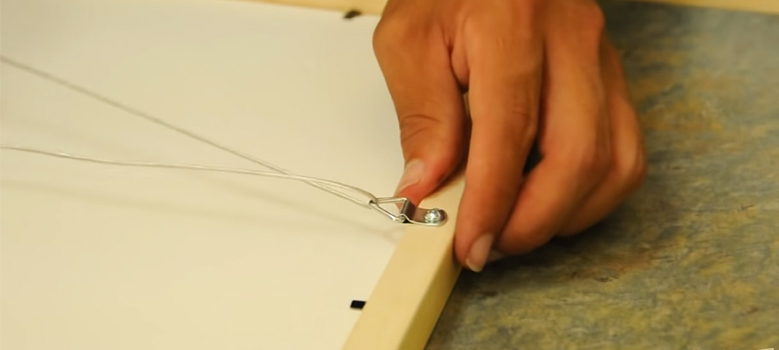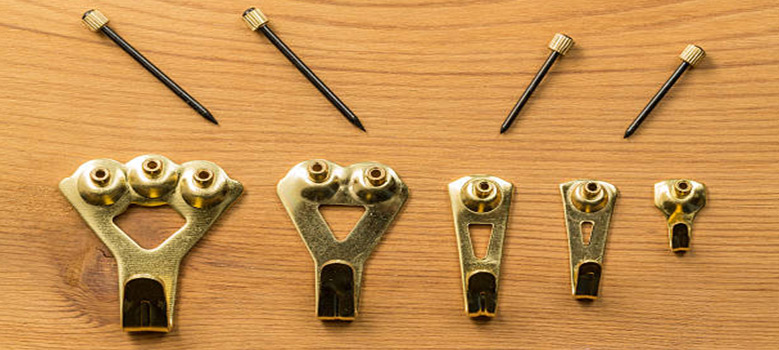Okay, so the magnetic stopper that good old pal previously advised finally allowed you tranquillity in your home. But when the item gradually loses its allure—both magnetically and visually—day by day, you might need to consider switching up your once-very handy magnetic door stopper for something more convenient, like a doorknob wall protection. Or perhaps you just don’t need a doorstopper for any reason!
How will you set up the upgrade and remove the old version? Naturally, by finishing this step-by-step manual. Let’s start now without further ado.
How Many Types of Door Stoppers
There are different kinds of door stoppers you can find in the market. Make sure you bought the right one that fits your need and when removing it also helps if you know your door stopper.
1. Floor Mount
A floor-mounted door stopper will endure many impacts from use thanks to its strong metal construction. The hooks are already drilled, making attachment simple and easy. There are furthermore low-profile variations to lessen possible swinging risks in crowded areas.
2. Wall or Door Mount
Installing stops on the walls or doorway that may be in contact is a wall or door mount option. This is widely used and versatile, and is available in heavy-duty, curved, coiled-spring, and aluminum forms.
3. Wall Mount Door Stopper
A curving or convex silicone bump, a metal-fixing structure, and a plate are all components of wall-mounted door stoppers. These stops don’t take up any extra space on the ground and are easy to install. Pairing these stops with a door knob or lever can offer handles and walls a durable defense.
4. Roller Stop
Roller stoppers are put between two doors to keep them from hitting one another. With rubber rollers, doors will be simpler to slide and handle without the chance of inadvertently turning one doorknob through another. For numerous mounting possibilities, curved and straight alternatives are provided.
5. Hinge Mount
Without putting in a floor or wall, you may add safety by mounting door stoppers on the hinge. Furthermore, hinge mounts are perfect for restrooms since they lessen the chance of a door crashing into a lavatory or vanity while in use.
6. Keepers
Keepers are designed to keep doors wide open wide in public settings. Keepers are frequently added hooks and latches, but they can also be something as basic as a kick-down doorstop. In congested situations, keepers promote handiness while providing protection against impacts.
7. Adhesive Back
Back doorstops with adhesive are made to be installed flexibly. Adhere the glue to cabinets, surfaces, or any other object that a door could hit after removing the covering.
For safety, door stops frequently include a rubber top or bump. To provide durable protection during regular use in busy areas, many stoppers are composed of steel material or brass. They are intended to lessen noise and safeguard the door’s finish.
Step By Step Guide to Removing the Door Stopper
Tools Required for the removal are:
- Utility knife
- Putty knife
- Screwdriver
- Diagonal pliers
Door jambs have doorstops installed. These vertical pieces generally measure 1/2 by 1 1/4 inches and have beveled edges. Two components join vertically to the frame, while one piece runs horizontally over the head. As you shut the door, it fits firmly on the door stopper at the top, on both sides and in the middle. If the door warps, the door frame tilts for whatever cause, the door is broken, doesn’t shut properly, or gets caught, you may take the doorstop off and fix it if required.
To remove the door stopper, follow these simple steps, and you will be able to remove almost any door stopper:
- Reach as far out the door as you can.
- Use a utility blade tip to cut around the door stopper. To carve around the doorstop, use the tip of a utility blade. Cut all the way around the stopper’s edges where it connects to the sides with the knife. Remove any paint or varnish stains.
- Insert the tip of a putty knife between the stop and the frame. Use the cutter to rotate and press the doorstop until you’ve made a tiny opening big enough for a screwdriver head to fit through.
- Pull the stopper down to make a crack that is at least 1/4 inch wide. Press the screwdriver up and down as you push the stop, until you can slide your fingers beneath it or until it completely pulls away from the jamb.
- Completely remove the piece from the jamb; use a pair of diagonal pliers to remove any leftover nails from the doorstop or frame. In the same manner, remove all the parts.
You can remove a doorstopper in a variety of ways. You can pull it out with a screwdriver. You can also remove the screw keeping the stopper in position by drilling it with a drill. Lastly, you can exert enough effort with a crowbar or hammer to remove the stopper.
Tips and Warning
The top of the doorstop could or might not be mitered, based on who installed it. It won’t make that much difference when uninstalling it, but if you’re installing a new doorstop, make sure you always miter the top. It looks a lot better and shows how much you value crafting. When dealing with wood and drills, use safety eyewear.
Frequently Asked Questions and Answers
What Hinge Should Door Stops Use?
Doorstop hinges come in a wide variety of designs. They are available in iron, alloy, brass, and plastic varieties. The most popular kind of hinge is a mechanical hinge called a spring hinge, which uses a spring to help support the weight of doors and hold it in place as it is open.
How Can a Door Stopper Be Reattached?
You must first take the door stopper off the doorway. You must then remove the stopper’s bottom. To accomplish this, put a flathead driver or pry bar at an angle into the bottom hole. You may then unscrew the stopper’s base without causing any damage.
The last step is to locate a screw that will work in place of the old one and install it in one of those openings up top. All left to do is use a screwdriver to secure the screws, and voila!
Conclusion
The door often leaves unattractive stains on the wall in structures. A doorstop, however, can solve this issue. Doorstoppers are, fortunately, inexpensive and easy to find at any nearby shop. So you know that even if you want to remove your door stopper from your wall, leaving the door unattended would be unwise. There are plenty of options of door stoppers you can choose from.
We hope this article helps you to remove the door stopper from your wall properly. Be sure to follow safety measures when working with hardware and drills.





